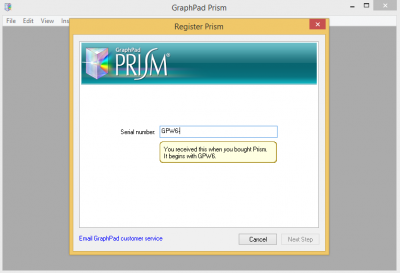
It then goes to the second results page (with curve fit results) and writes the value in the fifth row of the first column into the data table, and labels that column "logEC50". With each loop, it goes to the first results page (with the simulation) and regenerates with new random scatter. The first line of the script specifies which data table will hold the results.

Click analyze, and choose to do Column statistics (with normality test) or perhaps create a Frequency Distribution. After the script is complete, go to the first data table and view the results.ħ. Click the Run button on the Script dialog.Ħ. Then choose New Script, and start with a blank page.ĥ. Click the Prism button at the left of the toolbar, and choose Run Script. You can click in the upper left corner of the data table to change its format, if needed.ģ. The script will write the results into this table. Make sure that the first data table is empty and formatted for column data (no X column no Y subcolumns).

Create a Prism project that simulates a data set with random scatter (the first results sheet), and then fits a curve through these data with nonlinear regression (second results sheet).Ģ.

But for most people, the Monte Carlo analysis will be much easier.ġ. This page will help people who set up these scripts in earlier versions of Prism, or people for whom the Monte-Carlo analysis doesn't provide enough versatility.


 0 kommentar(er)
0 kommentar(er)
